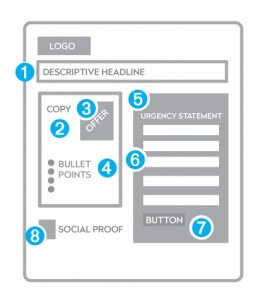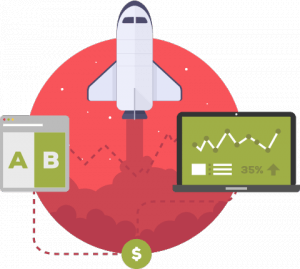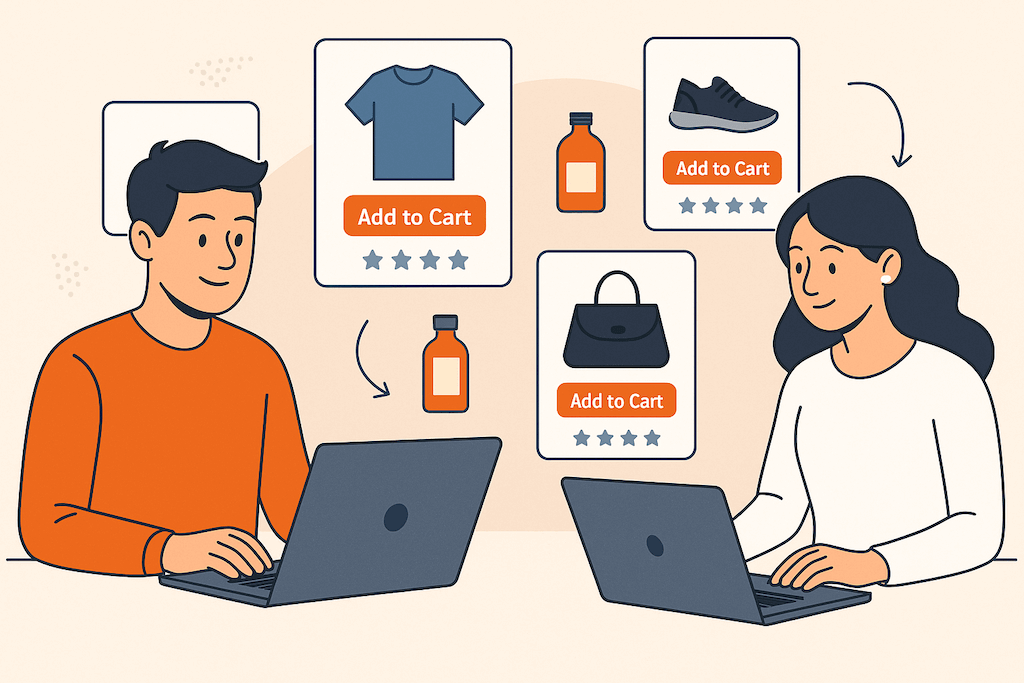As marketers, it may seem challenging to attract valuable traffic to our websites – especially when you’re competing against hundreds of other companies doing the same thing. However, as business owners, it’s our job to take advantage of every resource available to strategically capture consumer attention. Why not try a landing page?
A landing page simply refers to a page (different from your website) that users encounter, and is designed to convey a single objective related to your business. The idea is to expand the message of an advertisement or link, and help guide users into taking action toward your conversion goal.
Types of Landing Pages
There are many different ways you can design and convey messages through landing pages. Whatever your business goals may be, the point is to attract potential consumers and encourage them to choose your product or service.
Here are some of the popular landing pages out there:
- Click Through – provides essential details about an offer and allows users to click through the company’s website to complete the transaction.
- Lead Generation – gathers information from the visitor, and usually offers an incentive after submitting the data.
- Microsites – an extension or “mini” version of the company’s main website with several pages that are used for larger ad campaigns. Microsites are considered as landing pages because users arrive at this site through paid online ads.
 Captivating Design
Captivating Design
Some of the best landing pages are simple, yet captivating and creatively designed. An effective landing page not only speaks directly to your target audience, but is also easy to navigate and contains a meaningful call-to-action. However, some business landing pages fail to meet consumer expectation. That’s why it’s important to know what key elements make up the ideal landing page.
6 key elements for the perfect landing page:
- Headlines. The landing page headline should complement the text in your advertisement. It’s important to have consistent wording between the landing page text and the advertising message in order to improve your Google AdWords score, and determine the cost-per-click (CPC).
- Text and Grammar. The message should also be clear and concise. The content should catch a reader’s attention with an interesting headline. It’s easy for customers to mistrust companies if there are grammatical errors. Make sure to spell check!
- Trust Indicators. Building trust with customers is essential for any business. A successful way to build trust is to include testimonials, company reviews, guarantee seals, 3rd party trust and security certifications (VeriSign, BBB, etc.).
- Call-to-Actions and Buttons. Using a creative and strong call-to-action is a clear way to encourage visitors to take the next step. Buttons and submit forms should stand out, and should include words that appeal to users such as “free,” “new,” “buy now,” or “download.”
- Placement and Content. It’s all about placement. The most important material should be placed where users can see it without having to scroll, or search for the call-to-action.
- Colors and Mood. Using the right colors not only sets the mood of a landing page, but also influences the user’s actions. Be wise with the colors you choose, though. You don’t want to scare your visitors away.
How to Effectively Test Your New Landing Page
- Run A/B Testing. A/B testing dynamically tests two different versions of a landing page in order to study how users interact with the page, and see which one converts better.
- Multivariate Testing (MVT). This form of testing allows you to study how multiple landing page elements interact with each other, and helps you improve response rates.
Conclusion
As you can see, it takes a lot of time and effort to develop the “perfect” landing page. Depending on your business goals, it may take several rounds of trial and error to get it right. From design to text and testing, these are just a few helpful tips to guide you through the landing page process.
Cultura Interactive is a full service, Fort Lauderdale web design agency that strives to not only create unique and attractive websites, but also helps businesses improve their internet marketing strategies in a less-complicated way.
Our team of professionals specialize in web design, logo design, WordPress development, eCommerce, responsive web design, mobile apps, SEO, social media marketing, pay per click advertising and more. Learn more about our services or contact us for a personal interview.


